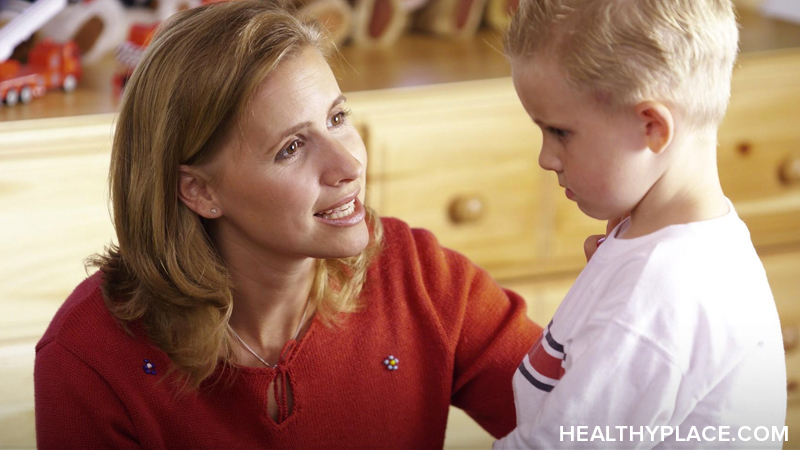What to Avoid When You Discipline a Child with PTSD

Knowing how to discipline a child with PTSD is a crucial part of parenting a child who has experienced any type of trauma. Experiencing trauma, whether it was a single event or repeated incidents, negatively affects the child’s emotions, thoughts, physical reactions, and behaviors and decreases their ability to cope in constructive ways. Parents often feel powerless to help their children and at a loss regarding how to discipline them. Because knowing what not to do is as important as knowing what to do, here are some things to avoid when you discipline a traumatized child.
The Challenge of Disciplining a Child with PTSD
Kids who have experienced trauma often develop difficult behaviors. Being in constant survival mode and in a state of fight, flight, or freeze, their brain is on alert for dangers. What the brain seeks, it usually finds, so children with PTSD are easily triggered. This leads to disconcerting behaviors like:
- Irritability
- Clinginess
- Frequent crying spells
- Severe tantrums
- Disobedience
- Defiance
- Refusal to listen or follow rules
- Arguing
- Talking back
- Fighting
- Getting into trouble (both school and home)
- Running away
- Substance use
- Delinquency
- Reckless, irresponsible behavior
These behaviors can be challenging, stressful, anxiety-provoking, and exhausting. Maybe you often feel at your wit’s end. All the frustrations that come with disciplining can interfere in your disciplining your child. Once you discover how to discipline a child with PTSD, the process becomes easier and your relationship with your child can improve.
What to Avoid When You Discipline a Traumatized Child
When addressing the above concerns, it’s important to keep in mind that they aren’t intentional but instead are reactions to triggers that remind the child of the trauma. It’s natural for parents and other caregivers to take the negative behaviors personally; however, no matter how it seems, the misbehavior frequently has nothing at all to do with the parents.
An important guideline for how not to discipline a child with PTSD is to avoid taking the behavior personally. Remembering that your child is operating out of trauma rather than negative emotions toward you will help you remain calm and tend to your child rather than the outbursts.
When kids feel safe, loved, and understood, they respond better to parental discipline. When discipline efforts disregard kids’ needs for protection and security, they can suffer setbacks that prolong healing and a lack of closeness to their parents. Avoid these approaches and actions when disciplining a child with PTSD:
- Forgetting to address your child’s emotions before dealing with the behavior
- Instantly reacting in anger or frustration
- Yelling
- Touching, grabbing, or spanking your child
- Punishing—including any kind of physical punishment
- Staring down the child or making prolonged eye contact (these are interpreted as aggression)
- Ordering your child to talk/explain themselves
- Interrupting and refusing to listen
- Creating extreme expectations, either too high or too low
- Letting yourself get sucked into power struggles, arguing and insisting on control
See: How to Discipline a Child Without Hitting or Yelling
Using this list of what not to do will go far in disciplining a child with PTSD. Avoiding these actions will help you lovingly teach your child what behaviors you find unacceptable.
What to Do Instead When Disciplining a Child with PTSD
Seek to understand your child’s PTSD symptoms and reactions to various triggers. This way, you can more easily avoid harmful discipline tactics and use a positive, gentle approach that helps children gradually heal from their traumatic experience(s). These qualities and actions go a long way helping kids feel loved and safe when disciplined:
- Patience
- Gentleness
- A calm, quiet demeanor
- Availability when your child needs to talk
- Willingness to give your child some choices and control
- Use of natural, logical, and short-term consequences
- Realistic expectations for your child
Finally, the way you see your child is crucial. It affects how you interact with them and shapes your approach to discipline. A statement by the Health and Human Services/Children’s Bureau (n.d.) advises, “Parenting a traumatized child may require a shift from seeing a “bad kid” to seeing a kid who has had bad things happen.”
Indeed, the number one thing to avoid when disciplining a child with PTSD is to see only their bad behavior and using it to define who they are.
APA Reference
Peterson, T.
(2022, January 11). What to Avoid When You Discipline a Child with PTSD, HealthyPlace. Retrieved
on 2026, January 10 from https://www.healthyplace.com/parenting/discipline/what-to-avoid-when-you-discipline-a-child-with-ptsd



